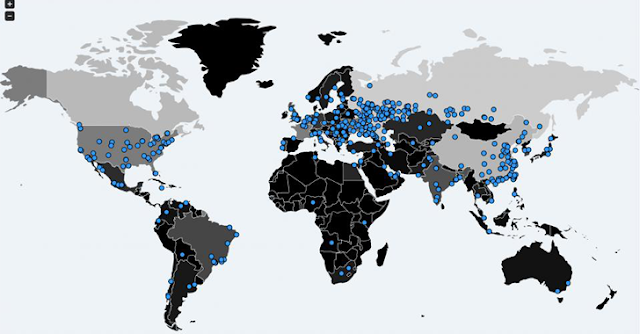Yesterday, a massive ransomware campaign hit computer systems of hundreds of private companies and public organizations across the globe. It is believed to be the biggest ransomware attack that the cyber community have ever seen. It has already infected over 75,000 PCs in 99 countries including United States, Russia, Germany, Turkey, Italy, Philippines and Vietnam, India in less than 24 hours.
The ransomware, called “WannaCry,” is spread by taking advantage of a Windows vulnerability that Microsoft released a security patch for in March. But computers and networks that haven’t updated their systems are at risk.
 |
| Countries infected with the ransomware |
According to a report, the ransomware attack has shut down work at 16 hospitals across the UK after doctors got blocked from accessing patient files. Another report says, 85% of computers at the Spanish telecom firm, Telefonica, has get infected with this malware.
Once infected with the WannaCry ransomware, victims are asked to pay up to $300 in order to remove the infection from their PCs; otherwise, their PCs render unusable, and their files remain locked.
“Affected machines have six hours to pay up and every few hours the ransom goes up,” said Kurt Baumgartner, the principal security researcher at security firm Kaspersky Lab. “Most folks that have paid up appear to have paid the initial $300 in the first few hours.”
Got scared already? Don’t want to be a victim of WannaCry Ransomware?
Here are some easy steps to protect your machine and secure your files from falling hostage to online scammers.
1. Patch you operating system
First of all, if you haven’t patched your Windows machines and servers against EternalBlue exploit (MS17-010), do it right now. Following the installation, make sure to reboot the system.
In general, patching your system and installing regular Microsoft updates should secure an average PC user from unwanted vulnerabilities.
2. Beware of emails
3. Backup your files
4. Get an Anti virus
Install an anti virus if you don’t have it already. Also make sure that you run an active anti-virus security suite of tools on your system, and most importantly, always browse the Internet safely.

